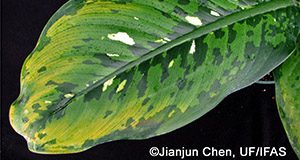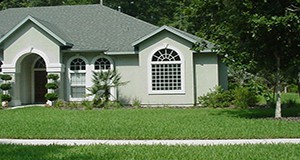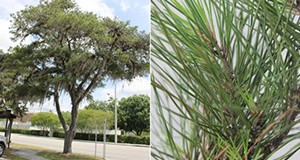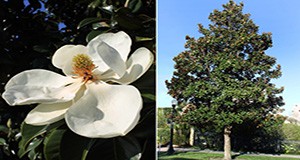A chilling temperature is any temperature that is cold enough to cause plant injury but not cold enough to freeze the plant. Chilling injury can occur to tropical foliage plants if greenhouses become too cold or if plants are exposed to chilling temperatures outside of the greenhouse during packing and shipping. Dieffenbachia, commonly known as dumb cane, ranks among the top five most popular foliage plant genera produced and sold in the United States. This four-page fact sheet describes the chilling temperatures of Dieffenbachia cultivars in order to assist growers to better manage greenhouse temperatures. Written by Jianjun Chen and published by the Environmental Horticulture Department.
http://edis.ifas.ufl.edu/ep530
Category: Lawn & Garden
Engaging High Water Users in Water Conservation #1: High Water Users' Experiences and Perceptions of Water
Florida has an abundance of water, but still faces an increased pressure on water resources because of a growing population, prosperous tourism, and an active agricultural industry. This five-page fact sheet is the first in a series discussing how Extension can improve high water users' engagement in water conservation by focusing on high water users' characteristics, experiences with water issues, and perceptions of water. Written by Pei-wen Huang and Alexa J. Lamm and published by the Department of Agricultural Education and Communication.
http://edis.ifas.ufl.edu/wc255
Texas Phoenix Palm Decline
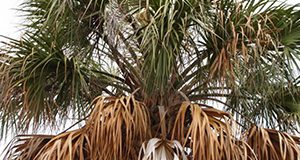
Texas Phoenix palm decline is a new disease in Florida, caused by an unculturable bacterium. It is a fatal, systemic disease that kills palms relatively quickly. This six-page fact sheet explains the pathogen and hosts of TPPD, its symptoms, how to diagnose it, and provides disease management practices. Written by Nigel A. Harrison and Monica L. Elliott and published by the Plant Pathology Department.
http://edis.ifas.ufl.edu/pp163
Frequently Asked Questions About Huanglongbing (HLB; citrus greening) for Homeowners
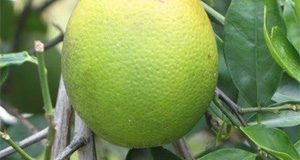
Huanglongbing (HLB), also known as citrus greening, is a serious bacterial disease that affects citrus in Florida. Florida residents enjoy growing citrus for a variety of reasons, but growing citrus in today’s disease climate is not an easy task. This seven-page document is designed to help Master Gardeners and homeowners answer commonly asked questions about HLB. Written by Brooke L. Moffis, Jamie D. Burrow, Megan M. Dewdney, and Michael E. Rogers and published by the Plant Pathology Department.
http://edis.ifas.ufl.edu/pp326
Creciendo Papas en el Jardín de su Hogar en la Florida
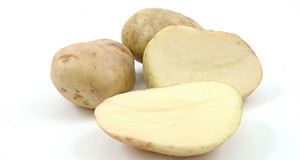
The Irish potato is a cool-season crop. A recently grown and harvested potato exhibits different flavor profiles from one that has been in storage or on a grocery shelf for an extended period. For example, in storage, the starches in potatoes convert to sugars, resulting in a less desirable texture and taste. “New” potato flavor can be achieved in the home garden by following a few growing recommendations. This is ten-page fact sheet is the Spanish language version of HS933 Growing Potatoes in the Florida Home Garden. Written by Christian T. Christensen, Joel Reyes-Cabrera, Lincoln Zotarelli, Wendy J. Dahl, Doug Gergela, Jeffery E. Pack, James M. White, and Chad M. Hutchinson.
http://edis.ifas.ufl.edu/hs1282
Zika Vector Control for the Urban Pest Management Industry
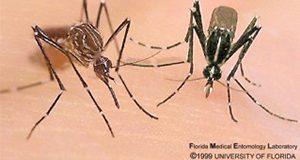
Zika is a mosquito-transmitted virus that has recently spread to the Americas. Zika virus (ZIKV) was discovered in 1946 in Africa where it was isolated from a Rhesus monkey in the Zika forest of Uganda. In 2007, a disease outbreak occurred on the Yap islands in Micronesia, and in 2013, an outbreak occurred in French Polynesia. In 2015, a large outbreak occurred in Brazil, and ZIKV has since spread through the Americas. As of April 18, 2016, 15 counties in the state of Florida had reported travel-associated Zika cases. This seven-page fact sheet provides an overview of ZIKV, including its incidence and distribution, transmission and symptoms, and the connection between zika virus and infant microcephaly. This article also explains the biology and identification of the mosquito that vectors the virus with a focus on how to manage the vector using inspection, larviciding, adulticiding, monitoring, and personal protective equipment. Written by Casey Parker, Roxanne Connelly, Dale Dubberly, Roberto Pereira, and Philip Koehler and published by the Entomology and Nematology Department.
http://edis.ifas.ufl.edu/in1131
Pest Identification Guide: Chilli thrips Scirtothrips dorsalis Hood
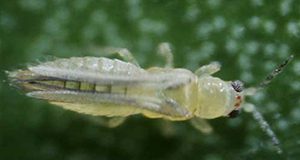
Chilli thrips transmits the ilarvirus Tobacco streak virus (TSV) and the tospoviruses Groundnut bud necrosis virus (GBNV), Groundnut chlorotic fan-spot virus (GCSFV), and Groundnut yellow spot virus (GYSV). This species primarily feeds on young, tender foliage. Feeding on foliage may result in silvering leading to necrosis, leaf curl (upward), distortion, and defoliation. Feeding on the fruit may cause scarring, discoloration, and the formation of corky texture on the fruit. Learn to identify the chilli thrips with this two-page illustrated guide written by Jeffrey D. Cluever and Hugh A. Smith and published by the Department of Entomology and Nematology.
http://edis.ifas.ufl.edu/in1124
Metsulfuron-Methyl-Containing Herbicides Potentially Damaging Ornamentals when Applied to Turfgrass
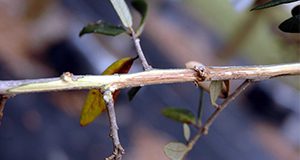
Metsulfuron-methyl, also known as MSM, is an herbicide that is used to control broadleaf weeds and certain grass weeds. It provides effective control of some of the most problematic turfgrass weeds, such as wild garlic, Florida betony, dollar weed, and small Virginia buttonweed. Metsulfuron-methyl is absorbed by plant foliage, so if landscape plants come into contact with the spray or drift they can be injured. This four-page fact sheet describes the potential problems with metsulfuron herbicides, the areas most subsceptible to damage, how to diagnose injury, and how to reduce damage. Written by Chris Marble, Jason Smith, Timothy K. Broschat, Adam Black, Ed Gilman, and Celeste White and published by the School of Forest Resources and Conservation Department.
http://edis.ifas.ufl.edu/fr400
Pond Apple: A Tree Species Adapted to Salt Stresses
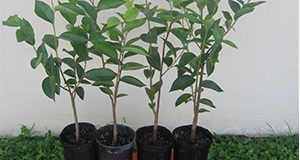
Soil salinity is a naturally ocurring problem for growers, gardeners, and homeowners in Florida. As sea-levels rise, seawater intrusion causes salt stress to plants grown in coastal lowland areas. This three-page fact sheet introduces a salt-tolerant species, pond apple (Annona glabra L.), which has great potential to be used in high-salinity coastal landscapes. Written by Guodong Liu, Yuncong Li, Kimberly Moore, and Kim Gabel and published by the Horticultural Sciences Department.
http://edis.ifas.ufl.edu/hs1281
Starting a Community Garden
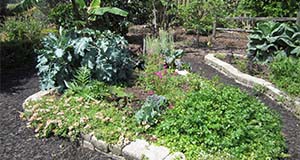
A community garden is a great way to unite a group of people in a common goal. In addition to providing fresh herbs, vegetables, and fruit, community gardens can also increase self-esteem, beautify a neighborhood, and create and opportunity for socializing and improving health. This four-page fact sheet outlines the importance of community gardens and how to develop and manage a community garden. Written by Adrian Hunsberger, Eva C. Worden, and John McLaughlin, and published by the Environmental Horticulture Department.
http://edis.ifas.ufl.edu/ep124
Insect Pest Management on Turfgrass
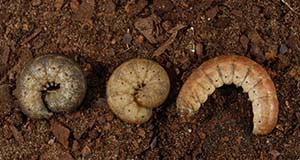
Turfgrass is grown in many environments and for different uses, including home lawns, parks, athletic fields, cemeteries, golf courses, sod farms, pastures, and right-of-ways. The intensity of turfgrass insect management largely depends on the turf species, variety, and its intended use. This eighteen-page fact sheet describes how to manage a variety of insect pests including armyworms, bermudagrass mite, cutworms, fire ants, ground pearls, hunting billbug, mole crickets, scales/mealybugs, southern chinch bug, twolined spittlebugs, tropical sod webworm, and white grubs. Written by Eileen A. Buss and Adam G. Dale, and published by the Entomology and Nematology Department.
http://edis.ifas.ufl.edu/ig001
Landscape Integrated Pest Management
Every landscape manager has a pest management toolbox, which contains tools that represent different management strategies. People can be quick to use pesticides, but an integrated approach using multiple tools can be much safer, have longer lasting beneficial effects, and in some cases cut costs. This 5-page fact sheet will help Extension agents and specialists, lawn and landscape managers, Florida Master Gardeners, and homeowners develop long-term sustainable pest management programs using an Integrated Pest Management (IPM) framework. Written by Adam G. Dale and published by the Department of Entomology and Nematology.
http://edis.ifas.ufl.edu/in109
How to Chemigate Salinity-Stressed Plants with Hydrogen Peroxide to Increase Survival and Growth Rates
Man-made activities can induce climate change and global sea-level rise, posing threats to the survival and growth of coastal vegetation in Florida. This three-page fact sheet explains how to ensure plant survival and facilitate the growth of coastal vegetation threatened by sea-level rise and the resulting oxygen deficiencies and saline stresses. Written by Guodong Liu, Yuncong Li, Kimberly Moore, Kim Gabel, Lei Wu, and Rafael Muñoz-Carpena, and published by the Horticultural Sciences Department.
http://edis.ifas.ufl.edu/hs1280
Consumer Perceptions of Lawn Fertilizer Brands
Widespread urbanization in the United States has increased the number of lawns. A healthy lawn provides many benefits, including urban heat dissipation, water quality protection, erosion control, carbon sequestration, community safety, aesthetics, and property value growth. Many homeowners maintain their healthy lawns by applying fertilizers throughout the growing season, but excess fertilizer runoff and leaching have received much attention recently because of waterway pollution and algae blooms, leading many states to place restrictions on what chemicals can be used in lawn fertilizers.
Consumers’ increased environmental awareness creates a niche opportunity for the fertilizer industry to promote environmentally friendly lawn fertilizers, but in order to effectively exploit it, industry stakeholders must understand consumer purchasing behavior before expending labor, time, and money creating products for sale. The following 3-page report written by Hayk Khachatryan, Alicia Rihn, and Michael Dukes and published by the Food and Resource Economics Department covers research methodology and the existing brand awareness and selection of consumers in the lawn fertilizer industry. It also discusses homeowners’ preferences for certain fertilizer attributes. Consumer awareness, selection, and attribute preferences indicate existing behavior, and understanding existing behavior assists in the development of effective marketing programs, promotional strategies, and policies.
http://edis.ifas.ufl.edu/fe990
My Pine Is Under Attack: What Should I Do? A Primarily Insect-Based Decision-Support Guide for Pine Death Management
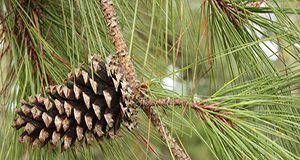
This guide is intended to help tree owners and Extension personnel in Florida and the adjacent southeastern region make decisions about backyard pine trees that display signs of attack by wood borers. The three-page pictorial guide written by Jiri Hulcr and published by the School of Forest Resources and Conservation will help determine whether beetles have attacked a pine tree, how far along the attack has progressed, and what to do about it. There are many sources of pine stress other than insects, so for complete advice, please contact your county Extension agent or post your question at the Tree Health Diagnostics Forum at the University of Florida website: http://www.sfrc.ufl.edu/treehealth.
http://edis.ifas.ufl.edu/fr399
Common Pines of Florida
 Pine trees are highly important to Florida’s ecosystems and economy. There are seven species of native pines, and each grows best in a particular environment. People have found varied uses for each species as well. Several species are of commercial value and are cultivated and managed to provide useful products such as paper, industrial chemicals, and lumber. Some species are also managed to enhance wildlife habitat and to provide attractive landscapes. Of course, many pines grow naturally. Like any natural resource, pines may provide more benefits if they are managed wisely. This 11-page fact sheet written by Niels Proctor and Martha Monroe and published by the School of Forest Resources and Conservation gives an overview of the features and identification of the major pines found in Florida.
Pine trees are highly important to Florida’s ecosystems and economy. There are seven species of native pines, and each grows best in a particular environment. People have found varied uses for each species as well. Several species are of commercial value and are cultivated and managed to provide useful products such as paper, industrial chemicals, and lumber. Some species are also managed to enhance wildlife habitat and to provide attractive landscapes. Of course, many pines grow naturally. Like any natural resource, pines may provide more benefits if they are managed wisely. This 11-page fact sheet written by Niels Proctor and Martha Monroe and published by the School of Forest Resources and Conservation gives an overview of the features and identification of the major pines found in Florida.
http://edis.ifas.ufl.edu/fr003
School Gardens: A Growing Part of Schools
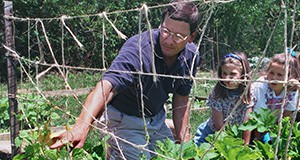
School gardens have been popping up like little pea plants in schools all over Florida. Not only are they an excellent way to get fresh produce into classrooms and cafeterias, but they also provide students with a living classroom where concepts related to science, math, agriculture, and nutrition can be learned and applied. This 4-page fact sheet discusses the benefits of school gardens to children and teachers, different types of school gardens, and points to consider while planning. Written by Kohrine Counts and Karla P. Shelnutt, and published by the UF Department of Family, Youth and Community Sciences, February 2016.
http://edis.ifas.ufl.edu/fy1463
Tong Hao: an Asian Vegetable Emerging in Florida

Tong Hao (Glebionis coronaria) is a member of the daisy family and therefore a relative of lettuce. It is an important vegetable in Asian communities. Grown in China for more than 900 years, Tong Hao is a branched annual leafy herb that can be cooked and eaten. This four-page fact sheet provides background information about Tong Hao, including information on growing, harvesting, and cooking it. Written by Guodong Liu, Qingren Wang, Bonnie Wells, Yuncong Li, and David Dinkins, and published by the Horticultural Sciences Department.
http://edis.ifas.ufl.edu/hs1276
Ten Common Conifers of the Tampa Bay Area
Conifers are cone-bearing trees often identified by their needles. In addition to their value as landscape trees and lumber and paper sources, they are popular around the holidays as Christmas trees.
This 6-page guide written by Andrew K. Koeser, Holly Finley, Gitta Hasing, Gary W. Knox, and Melissa H. Friedman and published by the Environmental Horticulture Department will assist you in identifying the 10 most common conifers that grow in the Tampa Bay area of Florida. It is an efficient resource for master gardeners, novice tree inventory crews, 4-H forestry teams, and others interested in basic conifer identification.
Ten Common Flowering Trees of the Tampa Bay Area
Blooming trees serve as key focal points in the urban landscape. Florida’s flowering trees can be quite spectacular and leave you wondering, Wow, what tree is that?
This 7-page guide written by Gitta Hasing, Andrew K. Koeser, Gary W. Knox, and Melissa H. Friedman and published by the Environmental Horticulture Department will assist you in identifying the 10 most common flowering trees that grow in the Tampa Bay area of Florida. It is an efficient resource for master gardeners, novice tree inventory crews, 4-H forestry teams, and others interested in basic flowering tree identification.
edis.ifas.ufl.edu/ep505
